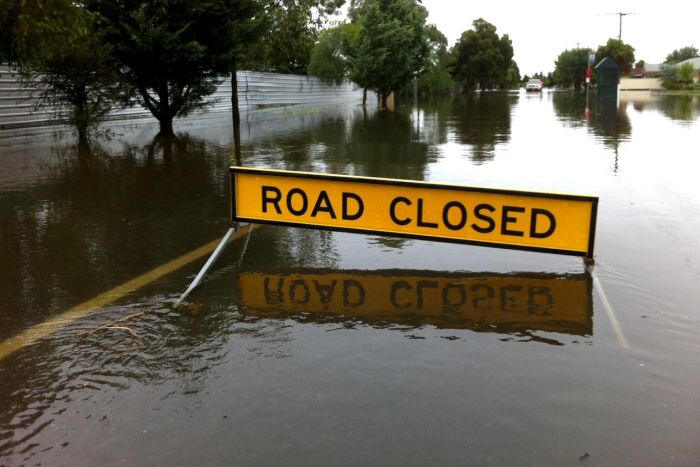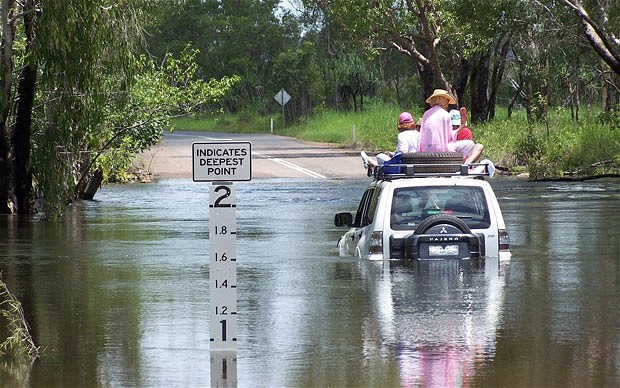After recent events on the Sunshine Coast and seeing some brave souls driving through water, I thought I would use my practical experience both in insurance and in four-wheel-driving to help people understand the problems with cars and with flooded roads. Here are 2 things to consider:-
1) Height and weight vs depth and speed
2) Mechanics & Electrical.
First of all, as a four-wheel-drive owner myself and owning both diesel & petrol models, you have to realize the capabilities of your vehicle and yourself. The reason a lot of people get into trouble is simply that cars in general can float and if you have a small, low to the ground and light weight vehicle attempt to cross a road with a water depth of say about forty centimeters, your wheels may lift off the road rendering your vehicle in capable of continuing on and adversely effecting your steering. So if the water is flowing fast across a road, once you lose traction as your cars lifts, it just becomes a bobbing cork and is simply flushed off the road into deeper water to then slowly sink or catch in trees or under bridges and then the inevitable can happen.
Even with higher and heavier vehicle such as 4wd’s with bigger wheels, lifted suspension, the same can still happen to these vehicles and they can still fall victim as the water gets deeper. Just because it’s a four-wheel-drive, turbo diesel or V8 with NAVMAN and Bluetooth, does not guarantee a safe trip across a flooded road. Once that vehicle gets into deeper water, it too can lift from the bitumen, float and be pushed by currents into the creek. Obviously a four-wheel-drive owner may think they have a better sporting chance, but realistically, you don’t know just how deep the water is that you about to cross and at the same time the water could be rising as you attempt to cross it. People also severely underestimate the power of flowing and fast moving water.
The other issue is that if electrics on a vehicle (particular but not limited to a petrol vehicle) gets wet or damp, can cause the car to stall rendering it completely useless. Another issue I saw on TV were people just driving fast through roads covered as little as twenty – thirty centimeters of water. If enough water is splashed up into the engine bay area to wet or soak your electronics, your car will more than likely stall right in the water leaving you stranded. Again with the water on the rise, the cars start to float and off you go, floating off the road and immediately into deeper water and into structures which can lead to a serious issues including death. If you enter flooded waters and it is clearly marked that you are not to cross, or the road has been closed due to the floods and you fail to heed to the warnings and your car gets stuck and water damaged, your insurer may not pay the claim for damage to the vehicle.
This is the reason the slogan is so much widely use. If its Flooded, Forget it. There are just too many variables to consider that most people don’t take into account when they start to cross a flooded road. It’s simply not worth the risk.





